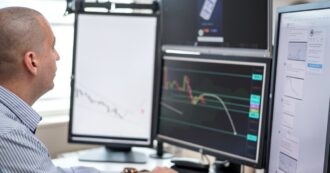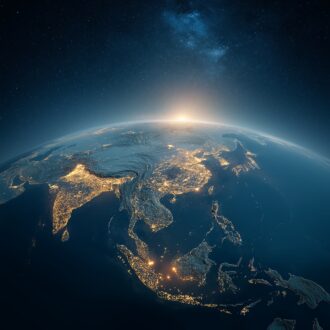A tsunami sounds terrifying just by its name, but do you know where and when you can expect it, and most importantly: what it is?
What is a tsunami?
“Tsunami” as a word comes from Japanese and means “harbor wave.” Tsunamis are seen primarily in the Pacific Ocean — 71% of all occurrences — and Indonesia. Yet, they can also appear in the Mediterranean and the Caribbean Sea regions. A common place of its occurrence is an ocean or major lake. This meteorological phenomenon comprises a series of waves in a water body, with waves reappearing every few minutes or hours (colloquially called a “wave train”).
The wind generates regular waves — whenever we are at the seaside, and the wind blows hard, we can notice with the naked eye that waves grow in size, rapidity, and frequency. Tides, in turn, are created by the gravitational pull of the Moon and the Sun. Tsunamis have a different source. They are generated by large events, such as:
- earthquakes and volcanic discharge (responsible for generating the majority of tsunamis);
- underwater explosions (landslides, detonations, glacier calvings, and meteorite consequences).
that causes a considerable quantity of water to move at once.
Tsunamis are far more extensive than regular waves, achieving tens of meters as a quickly rising tide. Therefore, they are sometimes casually called “tidal waves”. However, we advise avoiding using these two terms interchangeably, not to suggest that there are any common generative powers to both phenomena.
What makes tsunamis dangerous?
The destructive power of tsunamis can affect the entire ocean, but, not surprisingly, what we are most worried about are societies and material goods. These natural phenomena can strongly affect coastal areas. The 2004 Indian Ocean tsunami spread through the coasts of 14 countries, rose to over 100 feet (30.48 meters) high, and measured 9.1 on the Richter scale, becoming one of the deadliest natural disasters in human history. At least 230,000 people were killed or missing and 110,000 injured, sucked into the ocean as the tsunami waves retreated, wreaking havoc, death, and devastation. Unfortunately, there were no Tsunami Warning Systems in place.
Probably the most dangerous unique characteristic of a tsunami is its fierceness. When the water level and currents rise rapidly, and there are no Tsunami Warning Systems to predict this course of events, the situation can get extremely dangerous. But it’s not only about the material losses. With high waves, people who cannot escape from the shore to high ground drown or get injured. Another “wave train” can come in hours after the initial one. Also, if the wave is minor, after the first one, some people will return to the danger area, thinking the tsunami is over, while that, unfortunately, isn’t the case.
Apart from the tsunami’s influence on societies and goods, fauna and flora get hurt: by breaking weaker corals, burying low-lying corals with large volumes of sand from the beach, and stranding fish and marine animals on the land, causing their death.
How to recognize the arrival of a tsunami? This is an essential question to ask, especially if there are no other signaling systems to warn us in time. People living in a tsunami hazard area should educate themselves about how to act in case of danger. The natural tsunami signs are:
- a loud sound, as if a cargo train were coming from the ocean,
- a shaking of an earthquake;
- water receding from the beach unnaturally quickly.

Can Germany get a tsunami?
Climate change impacts extreme weather events globally, and Germany is no exception. Among natural disasters in Germany, the relevant hazards are heat, frost, floods, storms, and earthquakes; with most of this central-European country’s earthquake faults concentrated in the Rhine area, the Swabian Alb, Eastern Thuringia, and Western Saxony.
Luckily, the tsunami hazard level in Germany is low (below 2%) and is expected to be within the next 50 years. However, it doesn’t mean that we can feel completely safe. We still know little about the nature of tsunamis. If local authorities or other significant sources suggest there is a tsunami hazard, people should follow the recommendations given by experts.
With time, as the global mean sea level rises, areas at risk of a tsunami will increase. According to the Intergovernmental Panel on Climate Change (IPCC) global mean, the range of sea level estimates for 2100 is from around 20 cm to nearly 1 m. However, the rise depends on various factors, so it’s challenging to be detailed with numbers. Also, these measures are hard to predict regionally. Luckily, the German Tsunami Warning System is of the highest quality, and if the situation ever gets dangerous, no one will be left uninformed about the upcoming threat.


